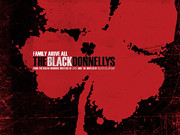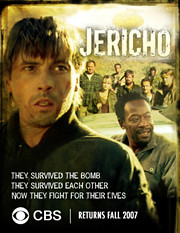Yesterday, when I wrote about David Meerman Scott's book, something stuck in my head: social media is a medium about people. It wasn’t until this morning that I realized why it stayed there. It reminded me of an article I wrote some time ago about human capital.
Human capital is nothing new. Borrowed from economics and broadened to reflect human potential as an asset, it has been contemplated by organizations for more than a century. It has also been proven to be critical to success and tied to shareholder value. (One Watson Wyatt study concluded that firms with high employee commitment averaged three-year returns of 112 percent while those with low employee commitment averaged 76 percent.)
Back when I wrote the article, I was asking experts if human capital was so critical, then why do companies lay off employees anytime increased competition cuts into profit margins, economic conditions deteriorate, or a crisis occurs. While some people pointed to the concept that layoffs are “just part of business,” I found another answer all together.
While there are times when there is no other option than downsizing (eg. a high growth company over staffs), most companies have another reason for laying people off — they don’t know who their employees are, which makes them expendable.
“Executives and managers pursuing their MBA are not taught people skills or how to manage employees,” James Lukaszewski, one of the most prominent advisors and crisis communication strategists in the country, told me then. “In most companies, there is a clear division between management and employees.”
The division, more often than not, is non-communication. Employees do not have a clear understanding of what they are supposed to do and, from executive management to key supervisors, no one knows how to tell them.
“Negative communication is non-communication,” he said. “Managers and supervisors are so busy telling people they did it ‘wrong’ or ‘that’s not the way we do it,’ they forget to tell employees how to do it, if they say anything at all.”
Rather than evaluating employees on what they did wrong or focusing on what they did not accomplish, Lukaszewski said companies are better served by applying positive communication that clearly defines what to do next. If they know where the department or company is going and what they can do to get there, it will produce more positive opportunities for the future.
“Yesterday is over. And frankly, it doesn’t matter,” he said. “Companies that will succeed are outcome forward. It’s human nature for people to want to please their supervisors so it’s up to supervisors to show them how to do it.”
We then went onto discuss employee evaluations (noting, at the time, less than 40 percent of employees received meaningful evaluations because they were outdated, did not reflect job descriptions, or were misunderstood by supervisors). But that drifts too far off topic to share as this post applies more to social media.
If you’re a communicator or public relations practitioner who wants to embrace social media but cannot seem to find any executive support, the first step is education. Much like their own employees, most executives have no idea who bloggers, vloggers, and podcasters are because they’ve gotten it into their heads that they are bathrobe experts with blow horns, not to be taken seriously.
Sure, it used to be that way, but not so much anymore. Everyday, I see more and more experts breaking into social media because they are beginning to understand that this medium is about people.
Why should executives care? Well, it seems to me that some bloggers are starting to understand employees, consumers, and even shareholders better than most companies understand these publics. And unlike journalists, some bloggers could care less about being objective or sourcing two sides of the story.
How is that relevant? For companies that do not have a social media presence today, it's more than relevant because if the company doesn’t understand or have the ear of its employees, consumers, and shareholders, then certainly, someone else will (most likely someone in social media).
Currently, most companies treat bloggers just like employees. They ignore them, until the blogger writes something they don't like. Only then will the company address what the blogger wrote to say it was ‘wrong’ or ‘that’s not the way we do it,' as if to imply some secret method to the madness exists behind closed doors (rarely).
That's backwards thinking and I'm not surprised. There are plenty who like to pretend product and price is the end all to everything. In fact, these are the same folks who think backwards about media too. (Please write about us when we need help promoting a product, but kindly stay away when dark clouds loom on the horizon).
Instead of ignoring social media, companies might consider that the social media represents a great communication tactic to reach people in various publics and, if done correctly, better tap into the idea that human potential is an asset, inside and out.
There are several ways to do this with social media: establishing a direct connection with employees, better understanding consumers and motivating them in way that they assist in marketing efforts, or considering that the double-edged single-view sword of blogging can work for a company as much as it can work against it.
Ergo, if social media is a medium about people, it might be time to consider how social media could enhance human capital. But, of course, this assumes you have the right message to communicate anyway. Unfortunately, most companies and organizations are still struggling with that. (Hint: what consumers, employees, and shareholders value is almost never what top executives value.)

Human capital is nothing new. Borrowed from economics and broadened to reflect human potential as an asset, it has been contemplated by organizations for more than a century. It has also been proven to be critical to success and tied to shareholder value. (One Watson Wyatt study concluded that firms with high employee commitment averaged three-year returns of 112 percent while those with low employee commitment averaged 76 percent.)
Back when I wrote the article, I was asking experts if human capital was so critical, then why do companies lay off employees anytime increased competition cuts into profit margins, economic conditions deteriorate, or a crisis occurs. While some people pointed to the concept that layoffs are “just part of business,” I found another answer all together.
While there are times when there is no other option than downsizing (eg. a high growth company over staffs), most companies have another reason for laying people off — they don’t know who their employees are, which makes them expendable.
“Executives and managers pursuing their MBA are not taught people skills or how to manage employees,” James Lukaszewski, one of the most prominent advisors and crisis communication strategists in the country, told me then. “In most companies, there is a clear division between management and employees.”
The division, more often than not, is non-communication. Employees do not have a clear understanding of what they are supposed to do and, from executive management to key supervisors, no one knows how to tell them.
“Negative communication is non-communication,” he said. “Managers and supervisors are so busy telling people they did it ‘wrong’ or ‘that’s not the way we do it,’ they forget to tell employees how to do it, if they say anything at all.”
Rather than evaluating employees on what they did wrong or focusing on what they did not accomplish, Lukaszewski said companies are better served by applying positive communication that clearly defines what to do next. If they know where the department or company is going and what they can do to get there, it will produce more positive opportunities for the future.
“Yesterday is over. And frankly, it doesn’t matter,” he said. “Companies that will succeed are outcome forward. It’s human nature for people to want to please their supervisors so it’s up to supervisors to show them how to do it.”
We then went onto discuss employee evaluations (noting, at the time, less than 40 percent of employees received meaningful evaluations because they were outdated, did not reflect job descriptions, or were misunderstood by supervisors). But that drifts too far off topic to share as this post applies more to social media.
If you’re a communicator or public relations practitioner who wants to embrace social media but cannot seem to find any executive support, the first step is education. Much like their own employees, most executives have no idea who bloggers, vloggers, and podcasters are because they’ve gotten it into their heads that they are bathrobe experts with blow horns, not to be taken seriously.
Sure, it used to be that way, but not so much anymore. Everyday, I see more and more experts breaking into social media because they are beginning to understand that this medium is about people.
Why should executives care? Well, it seems to me that some bloggers are starting to understand employees, consumers, and even shareholders better than most companies understand these publics. And unlike journalists, some bloggers could care less about being objective or sourcing two sides of the story.
How is that relevant? For companies that do not have a social media presence today, it's more than relevant because if the company doesn’t understand or have the ear of its employees, consumers, and shareholders, then certainly, someone else will (most likely someone in social media).
Currently, most companies treat bloggers just like employees. They ignore them, until the blogger writes something they don't like. Only then will the company address what the blogger wrote to say it was ‘wrong’ or ‘that’s not the way we do it,' as if to imply some secret method to the madness exists behind closed doors (rarely).
That's backwards thinking and I'm not surprised. There are plenty who like to pretend product and price is the end all to everything. In fact, these are the same folks who think backwards about media too. (Please write about us when we need help promoting a product, but kindly stay away when dark clouds loom on the horizon).
Instead of ignoring social media, companies might consider that the social media represents a great communication tactic to reach people in various publics and, if done correctly, better tap into the idea that human potential is an asset, inside and out.
There are several ways to do this with social media: establishing a direct connection with employees, better understanding consumers and motivating them in way that they assist in marketing efforts, or considering that the double-edged single-view sword of blogging can work for a company as much as it can work against it.
Ergo, if social media is a medium about people, it might be time to consider how social media could enhance human capital. But, of course, this assumes you have the right message to communicate anyway. Unfortunately, most companies and organizations are still struggling with that. (Hint: what consumers, employees, and shareholders value is almost never what top executives value.)






















